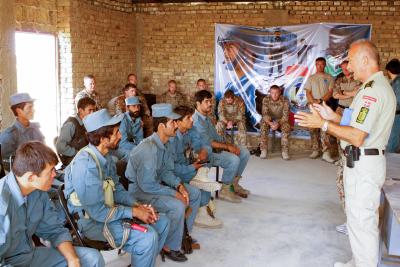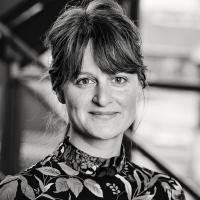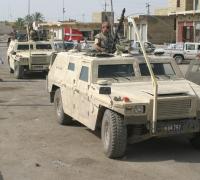How to consolidate the Danish comprehensive approach
Danish stabilisation efforts in fragile states aim to combine civilian, economic, political and military instruments from across relevant ministries. This multi-dimensional policy approach is referred to as the ‘comprehensive approach’ and has been applied to conflict management since the 2000s. It is formally entrenched in the framework of the Danish Peace and Stabilisation Fund and is one example of how Denmark applies it. However, the Fund only accounts for a small share of Denmark’s current stabilisation efforts. Could the fund’s institutional framework be extended to encompass a larger proportion of Danish engagement in fragile states?
The PSF is headed by a committee of high-level officials from the Ministry of Foreign Affairs, the Ministry of Defence, the Ministry of Justice and the Prime Minister’s office. The committee monitors the coherence of policies and strategies, and approves programmes and appropriations.
Inter-Governmental Secretariat
A small secretariat at the Ministry of Foreign Affairs oversees the implementation of PSF policy and supports the work of the Committee.
PSF daily management
Across the Ministry of Foreign Affairs and Ministry of Defence, selected offices oversee the implementation of PSF programmes and liaise with the field (embassies).
Internal and external implementing partners
Government bodies such as the Defence Command, Home Guard, intelligence services and Danida, as well as external actors such as UN agencies, NGOs and consultants, carry out the day-to-day implementation of PSF programmes.
Read the PSF guidelines (Danish Ministry of Foreign Affairs)
Inter-Governmental Steering Committee
The comprehensive approach – a Danish policy priority
Over the years, the scope of the Danish comprehensive approach has evolved from narrow civil–military cooperation within Denmark’s defence profile in the early 2000s to a broad approach in which attempts are made to coordinate multiple instruments in order to address a broad range of the dimensions and stages of a conflict. The comprehensive approach was formally incorporated into Danish policy planning in 2010 with the establishment of the Peace and Stabilisation Fund (PSF) headed by an intergovernmental steering committee (IGSC).
The aim of the PSF is to systematise collaboration across ministries and government bodies through regular meetings, formalised planning and coordinated implementation.
The annual budget for the PSF has been increasing since its creation. In 2010 it was about DKK 230 million, increasing to more than DKK 400 million in 2018. This illustrates the increased priority of the comprehensive approach as a policy instrument in Danish stabilisation efforts.
Time to widen the scope of the Peace and Stabilisation Fund’s organisational framework?
It is a central Danish priority to continue the comprehensive approach as the organising principle of conflict management. As of today, the PSF is the institutional and strategic structure dedicated to implementing the comprehensive approach.
However, the PSF is not being used systematically as a policy framework to address stabilisation efforts in fragile states. This is illustrated first by the fact that the above allocations to the PSF accounts for only a limited proportion of the overall resources spent on Danish interventions in fragile states. Secondly, the comprehensive approach is also implemented outside the PSF framework. Finally, the comprehensive approach is not always carried out systematically in Danish stabilisation interventions. Some key national strategies and policies are conducted through inter-ministerial processes, for example, when formulating the 2008 Afghanistan strategy and the counter-piracy strategies of 2011 and 2015. By contrast, other regional and country strategies, such as those targeting interventions in Iraq and the Sahel, are rather ad hoc policies formulated by individual government agencies.
If the comprehensive approach is to continue to be a Danish policy priority, should the PSF be scaled up as the institutional framework that ensures its presence in Danish stabilisation efforts? If so, is the PSF model ready for this purpose?
If the comprehensive approach is to continue to be a Danish policy priority, should the PSF be scaled up as the institutional framework that ensures its presence in Danish stabilisation efforts? If so, is the PSF model ready for this purpose? While this is a question for political deliberation, providing an answer requires careful attention to fundamental issues of PSF performance. This includes assessing the ability of PSF programmes to bring about stabilisation effects and the suitability of the PSF framework in managing the comprehensive approach.
The former (stabilisation effects) is regularly evaluated at various stages of programme cycles, but the latter (organisation) needs to be addressed specifically.
Key issues to consider
In 2016, the so-called Taksøe Report advocated extending the comprehensive approach to apply not only to stabilisation, but also to Danish foreign policy more broadly. This included the development of a national foreign and security strategy, coordinating government decision-making through the establishment of a national foreign and security policy forum or council, and including Parliament in decision-making processes. However, these recommendations have yet to be implemented.
As part of this intention to expand the comprehensive approach, it is pertinent to ask whether the PSF framework should be used to consolidate the comprehensive approach to Danish stabilisation efforts more broadly than the interventions that currently fall under the remit of the PSF. To do so, it is helpful to differentiate between the broadening and deepening of the comprehensive approach, in other words, between its horizontal and vertical integration into policy planning and implementation.
1. Broadening the scope of stabilisation interventions within the Peace and Stabilisation Fund
When considering expanding the remit of the PSF, it is worth asking whether the PSF is the proper framework to ensure the success of the comprehensive approach in Danish stabilisation interventions more generally, or should it be limited to certain interventions, as is the case now?
The PSF framework can be expanded as the model for systematising the cross-ministerial planning and implementation of Danish stabilisation interventions. To do so, the 2014 PSF guidelines define the type of stabilisation activities that are covered within the PSF framework. It focuses specifically on the stabilisation of fragile states and is qualitatively different from both conventional development assistance and military interventions. It works at the intersection between development and security in fragile states.
It brings out the fundamental need to develop not only a clear and shared definition of which stabilisation activities to cover, but also a common understanding across government bodies of what is meant by stabilisation – the intended outcome.
A challenge that needs to be addressed if the scope of stabilisation interventions is to be broadened within the PSF is that the comprehensive approach often involves prioritizing somewhat incompatible goals and working with conflicting timelines. Military efforts aimed at eliminating immediate threats to stability and civilian interventions aimed at capacity-building often point in different directions when it comes to working with local actors. Civilian and military activities can therefore risk facilitating conflicting engagement with existing power balances in different areas of activity. Thus, working across the security–development nexus should not be misinterpreted as a politically neutral action. This places even greater emphasis on the need to facilitate coordination within and between different policy components, as institutionalised in the PSF. But more importantly, it brings out the fundamental need to develop not only a clear and shared definition of which stabilisation activities to cover (as defined in the PSF guidelines), but also a common understanding across government bodies of what is meant by stabilisation – the intended outcome.
Another challenge in broadening the PSF framework is the limitations posed by differences in the time, place and expectations of Danish interventions in the same region. Regarding time, there is a lack of synchronisation: programmes within the PSF run for three years, development programmes for four years, while some defence interventions dealing with stabilisation issues only have one-year mandates. Regarding place, there is a fundamental difference in geographical scope: PSF programmes are primarily regional, while most development programmes have a national focus.
Inconsistencies in the time and place of different interventions may create challenges to implementation or disturb intended outcomes. This could be aggravated if the comprehensive approach is consolidated further through the PSF framework and would require a reorganisation of policy planning.

2. Deepening the comprehensive approach within the Peace and Stabilisation Fund
When considering further vertical integration of the PSF framework, it is worth asking: Are there limits to how joined up and integrated stabilisation efforts should be, or can the comprehensive approach be too comprehensive?
Deepening the comprehensive approach implies active attempts to create synergies at all levels of policy, from the very strategic top to the very operational bottom.
Challenges associated with this deepening are seen both across ministries and within them. Across ministries, the challenge pertains in particular to how the strategic and coordinating levels manage to harmonize the overall goals and avoid so-called silos. Within ministries, the challenge is for each ministry to engage all its implementing partners within its remit, because the focus on the comprehensive approach is often on creating bridges across ministries rather than within them.
The PSF framework can to some extent ensure the deepening of comprehensiveness through regular inter-ministerial meetings, common bodies etc. But to deepen the comprehensive aspect sustainably, less formally embedded practices are necessary in the framework, such as common cultures of communication and integrated traditions of collaboration. This is a long-term endeavour if and when the PSF framework were to be expanded.
However, there may also be limits to the value of making stabilisation interventions ‘comprehensive’ due to the complexity of stabilisation interventions. Interventions a) consist of multiple components that b) have both short-term and long-term effects but c) are subject to an inherently volatile context. Harmonisation and coordination between civilian, military and other components on the level of implementation may slow down work processes since it requires effort and resources to establish cooperation between actors that have different backgrounds, timelines, geographical scopes and modus operandi. This can produce transaction costs that are unnecessarily high compared to the added value of the approach, rather than focusing resources on the already complex task of implementing programme components in a volatile field.
DIIS Experts



